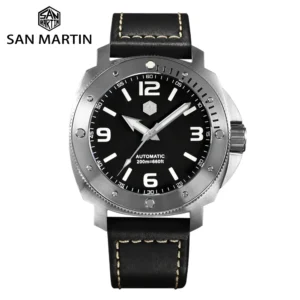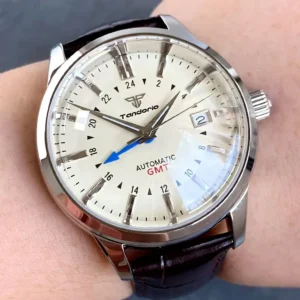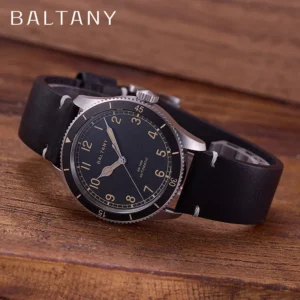Introduction: More Than Just Telling Time Underwater
Deep beneath the ocean’s surface, where light fades and pressure intensifies, a remarkable feat of engineering continues to perform flawlessly against extraordinary odds. The dive watch represents one of horology’s most impressive achievements—a precision instrument that maintains accuracy while withstanding crushing underwater pressure that would destroy most mechanical devices.
What began as a practical tool for military divers and underwater explorers has evolved into an enduring symbol of human ingenuity and adventure. These timepieces tell a story that goes far beyond their primary function of tracking elapsed time underwater. They embody mankind’s perpetual drive to explore the unknown and overcome seemingly insurmountable challenges.
But what exactly qualifies as a true dive watch from an engineering standpoint? At minimum, a proper dive watch must offer substantial water resistance (typically at least 100 meters), feature a rotating timing bezel to track immersion time, provide exceptional luminosity for dark environments, and maintain clear readability underwater. These fundamental requirements have shaped decades of innovation in automatic dive watches that continue to evolve today.
The heritage and evolution of dive watches represents a fascinating journey through mechanical innovation, material science, and purposeful design. From the earliest attempts at creating waterproof cases to today’s sophisticated engineering marvels capable of surviving the ocean’s deepest trenches, this story parallels our own quest to explore the underwater world.
Even those who have never strapped on a scuba tank recognize iconic models like the Rolex Submariner—a testament to how these specialized tools have transcended their original purpose to become cultural touchstones. More importantly, many engineering solutions pioneered for dive watches have become standard features across the broader watchmaking industry, improving durability and functionality for everyday timepieces.
As we dive into the rich history of underwater timekeeping, we’ll discover how necessity, military demands, and the competitive spirit of innovation forged the legendary timepieces we know today.
The Genesis: Early Pursuits of Water Resistance (Pre-1920s – 1930s)
The fundamental challenge that plagued early watchmakers was deceptively simple yet stubbornly difficult to solve: how to keep water out of a mechanical device full of tiny, precision components. Water is the natural enemy of any watch movement—causing corrosion, disrupting lubrication, and ultimately destroying the delicate balance that enables accurate timekeeping.
Early attempts at water resistance were rudimentary at best. Pocket watches were sometimes housed in additional protective cases—effectively a waterproof outer shell that had to be opened before the watch could be consulted. These solutions were cumbersome and impractical for regular use, especially in marine environments where quick time readings might be essential.
The watch industry saw numerous patents for waterproofing methods in the early 20th century. Innovators like François Borgel, Paul Perregaux, and Georges Perret developed screw-down case systems that improved water resistance, though none achieved true impermeability. These early innovations represent critical steps in the timeline of diving watch innovations that would eventually lead to modern dive watches.
The true breakthrough came in 1926 with Hans Wilsdorf’s Rolex Oyster case—the first truly waterproof watch case system that would go on to influence virtually all dive watch designs that followed. The Oyster’s genius lay in its threaded components that created a hermetic seal: a screw-down crown, case back, and bezel that worked together to form an impenetrable barrier against water. Like its namesake shellfish, the Oyster sealed itself tightly against its environment.
Wilsdorf’s marketing flair matched his engineering prowess. In 1927, he equipped English Channel swimmer Mercedes Gleitze with an Oyster during her cross-channel attempt. After over 10 hours in cold seawater, the watch emerged functioning perfectly—a public demonstration that transformed the Oyster from a clever invention to a proven technology.
Meanwhile, Omega pursued water resistance through an entirely different approach. The 1932 Omega Marine featured an innovative double-case system where the watch slid into an outer protective shell, creating a water-resistant chamber. Though less influential than the Oyster in the long run, the Marine demonstrated that multiple engineering solutions could address the water resistance challenge.
These early waterproof watches laid the groundwork for all that would follow—establishing fundamental principles of case sealing, crown protection, and gasket usage that remain relevant in today’s most advanced dive watches. Though not yet purpose-built for underwater exploration, these pioneering designs created the technical foundation upon which true dive watches would eventually be built.
Military Necessity: The Catalyst for Purpose-Built Dive Watches
World War II dramatically accelerated the development of underwater timekeeping technology. As naval warfare evolved, military forces deployed combat swimmers and frogmen for reconnaissance and sabotage missions, creating an urgent demand for watches that could withstand not just casual water exposure but prolonged submersion during operations.
The Italian Navy’s elite underwater commandos, working closely with Panerai, drove several innovations that differentiated military dive watches from merely waterproof civilian timepieces. Panerai leveraged Rolex’s waterproof technology but adapted it specifically for underwater combat operations through several key engineering enhancements:
- Dramatically enlarged cases (47mm+) for improved underwater visibility
- Highly luminous dials using radium-based compounds for nighttime operations
- The iconic crown-protecting bridge—a patented device that used a lever mechanism to create additional pressure on the crown seal during submersion
These specialized watches exemplified how military-inspired automatic watches often drive technical innovation that later benefits civilian applications.
The development of modern scuba equipment—particularly the Aqua-Lung co-invented by Jacques Cousteau and Émile Gagnan in the early 1940s—created entirely new requirements for underwater timekeeping. Self-contained underwater breathing apparatus allowed divers to stay submerged longer and reach greater depths, but it also imposed strict time limitations based on air supply and decompression requirements.
The existing “waterproof” watches had several limitations when used for actual diving:
- Inadequate depth ratings for extended underwater use
- No standardized way to track elapsed dive time
- Poor visibility in murky or dark underwater conditions
- Vulnerability of the crown during dynamic movement underwater
These challenges highlighted the gap between waterproof watches and true diving instruments. As civilian and military diving evolved rapidly in the post-war period, the stage was set for purpose-built timepieces that would address these specific needs. The influence of marine exploration on dive watches would prove profound, as practical underwater experience revealed which features were essential for safety and functionality.
The military’s exacting standards and the life-or-death nature of underwater operations ensured that dive watch engineering would prioritize reliability and readability above all else—principles that would define the category for decades to come.
The Golden Age: Birth of the Modern Dive Watch (1953-1959)
The year 1953 marks a pivotal moment in horological history—the birth of the modern dive watch as we recognize it today. In a remarkable coincidence, three manufacturers independently released models that would define the category’s essential characteristics and set standards that remain influential seven decades later.
Blancpain Fifty Fathoms
The Blancpain Fifty Fathoms resulted from a unique collaboration between watchmaker Jean-Jacques Fiechter and Captain Robert “Bob” Maloubier of the French combat diving corps. Their partnership produced a watch specifically engineered to meet the demands of military divers:
- A unidirectional rotating bezel with minute markings to track dive time (the first of its kind)
- Automatic movement that eliminated the need to manipulate the crown underwater
- High-contrast black dial with oversized luminous markers for underwater legibility
- Antimagnetic shielding to protect against equipment interference
- Water resistance to fifty fathoms (approximately 91 meters)—considered the maximum achievable depth for divers at that time
Rolex Submariner
Building upon their Oyster case technology, Rolex’s Submariner further refined the dive watch concept with several engineering enhancements:
- Improved crown sealing system with multiple internal gaskets
- Pressure-tested to 100 meters (later increased to 200 meters)
- Graduated rotating bezel for precise timing
- Redesigned case architecture to withstand pressure at greater depths
Zodiac Sea Wolf
Often overlooked in dive watch history, the Zodiac Sea Wolf deserves recognition as one of 1953’s pioneering designs:
- Marketed as the “world’s first sports watch” with affordability as a key selling point
- 200-meter water resistance matching or exceeding its more expensive competitors
- Distinctive ratcheting bezel with luminous markers
- Bright, legible dial designed specifically for underwater use
These three watches, released within months of each other, established the template for what constitutes a classic-style dive watch that manufacturers continue to follow today. Their nearly simultaneous appearance demonstrates how the specific needs of underwater exploration had created a clear set of engineering requirements that demanded similar solutions.
The unidirectional rotating bezel represents perhaps the most significant safety innovation. Unlike bidirectional bezels found on earlier watches, these could only rotate counterclockwise—ensuring that any accidental movement would indicate more elapsed time rather than less, preventing divers from underestimating their bottom time and running out of air. This seemingly simple mechanical feature has saved countless lives over decades of use.
By the late 1950s, the dive watch template was firmly established, and the history of professional diving watches had begun its remarkable evolution. Manufacturers would continue to refine these designs, but the fundamental engineering principles introduced during this golden age remain largely unchanged—a testament to how perfectly these watches fulfilled their intended purpose.
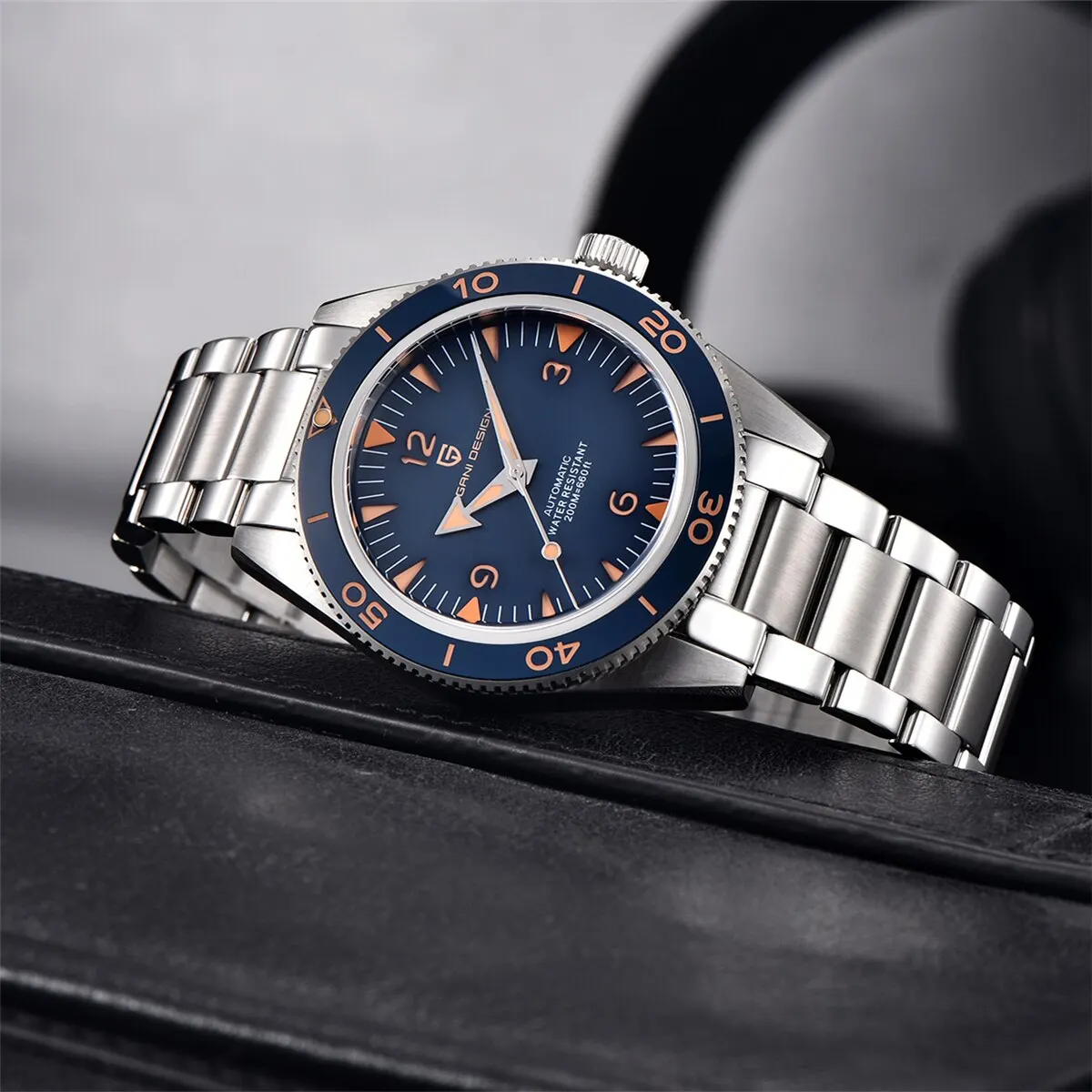
Engineering for the Abyss: The Race for Extreme Depths (1960s)
The 1960s witnessed an intensifying competition among watchmakers to conquer ever-greater depths—a technical arms race that pushed engineering boundaries beyond what practical diving required. This pursuit of extreme depth ratings served both as a marketing strategy and as a genuine test of engineering prowess.
The most dramatic demonstration came in 1960 when Rolex attached its experimental Deep Sea Special to the bathyscaphe Trieste during its historic descent to the Mariana Trench—the deepest point on Earth at approximately 10,916 meters (35,814 feet). To withstand such crushing pressure (over 8 tons per square inch), the Deep Sea Special featured:
- A massively domed acrylic crystal nearly 4cm thick
- A specially reinforced case that increased in thickness dramatically toward the caseback
- A unique compression system where pressure actually strengthened the seals rather than compromised them
This achievement, while not immediately applicable to commercial watches, demonstrated fundamental engineering principles that would influence future deep-diving models. These milestones in underwater watch engineering continuously pushed the boundaries of what was technically possible.
For more practical professional use, brands focused on enhancing visibility and functionality at more moderate depths. The Omega Seamaster 300 (despite its name, tested to 200 meters) featured:
- A wide-arrow hour hand for enhanced underwater legibility
- Double-crown system with separate crowns for time-setting and bezel rotation (on early models)
- Improved crystal mounting techniques to prevent displacement under pressure
Perhaps the most significant functional innovation of this era came from Doxa with its Sub 300T. Working directly with Jacques Cousteau’s diving team, Doxa introduced:
- A bright orange dial scientifically tested to provide maximum visibility at depth
- The first “no-decompression” bezel that allowed divers to calculate safe bottom times directly from their watch
- An innovative saw-toothed bezel edge for better grip with gloved hands
- Expanding bracelet that accommodated wetsuit compression at depth
The engineering advancements during this period weren’t just about achieving greater depth ratings—they reflected a growing understanding of what divers actually needed underwater. Professional-spec dive watches began integrating features specifically designed for the challenges faced during extended underwater operations.
Case thickness, gasket materials, crown sealing systems, and crystal mounting techniques all saw significant refinement. Engineers discovered that simple thickness wasn’t enough—the geometry of how components interfaced under pressure proved equally important. The distribution of stress across the case, the deformation characteristics of different materials, and the behavior of seals under compression became areas of intensive study.
These engineering lessons, born from the pursuit of extreme depth resistance, would soon face their greatest challenge with the emergence of saturation diving—a new technique that would reveal an entirely unexpected problem for dive watch designers.
The Helium Escape Valve: Solving the Saturation Diving Challenge
The development of saturation diving in the 1960s revealed a surprising vulnerability in even the most water-resistant watches. This specialized diving technique—where divers live in pressurized chambers for days or weeks while working at depth—created conditions no watch engineer had previously anticipated.
Saturation diving environments typically use a breathing mixture containing helium, the second smallest element on the periodic table. At high pressure inside saturation chambers, these tiny helium molecules could penetrate watch seals that easily blocked larger water molecules. During decompression, the helium trapped inside the watch case couldn’t escape quickly enough, creating a pressure differential that would often force watch crystals to pop off dramatically—sometimes launching across the decompression chamber like champagne corks.
The solution to this specialized problem came in the form of the helium escape valve (HEV)—a one-way pressure release valve that allows helium to exit the watch case during decompression while maintaining water resistance during normal use. Both Rolex and Doxa claim some credit for this innovation, with their respective commercial releases appearing nearly simultaneously.
From an engineering perspective, the HEV operates on elegantly simple principles:
- During normal operation, a spring keeps the valve sealed against water ingress
- When internal pressure exceeds external pressure (during decompression), the valve automatically opens
- Once pressure equalizes, the spring returns the valve to its sealed position
- Some designs feature manual valves that must be unscrewed during decompression
Rolex incorporated this technology into its Sea-Dweller model—essentially a Submariner modified with an HEV and enhanced depth rating. The valve itself appears as a small, additional crown on the case side at the 9 o’clock position, a visual signature that distinguishes professional saturation diving watches from standard dive models.
While only a tiny fraction of dive watch owners will ever experience helium saturation conditions, the evolution of dive watch technology continued to be driven by addressing these edge-case challenges. The HEV represented a perfect example of specialized engineering solving a problem most users would never encounter—a pattern of over-engineering that became part of dive watch culture.
The saturation diving challenge highlighted an important lesson: water resistance alone doesn’t guarantee a watch’s survival in all underwater environments. Temperature fluctuations, extended exposure to pressure, and the specific gaseous environment could all affect performance in ways that standard testing couldn’t predict. This understanding led to more sophisticated testing protocols that better simulated real-world diving conditions.
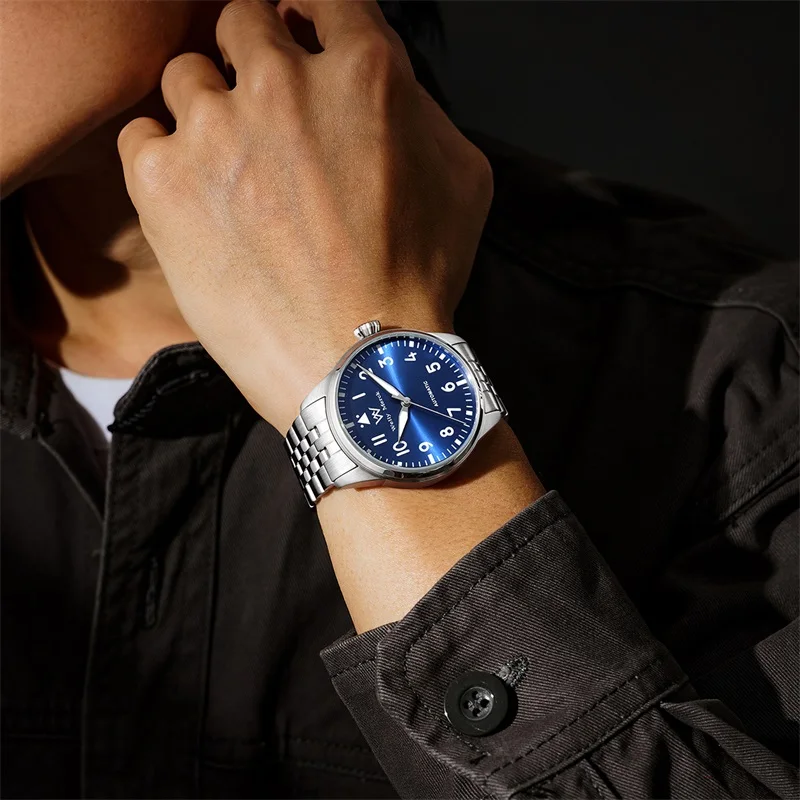
Material Science Revolution in Dive Watches (1960s-1970s)
The late 1960s and 1970s witnessed a revolution in the materials used for dive watch construction, dramatically improving durability, functionality, and resistance to harsh underwater environments. This period saw manufacturers moving beyond simply reinforcing existing designs to experimenting with entirely new materials that offered superior performance characteristics.
Crystal Evolution: From Acrylic to Mineral to Sapphire
Early dive watches utilized acrylic crystals (essentially high-grade plastic) that offered excellent shock resistance but scratched easily. The material progression followed:
- Acrylic (Plexiglas/Hesalite): Highly shock-resistant, easily polished, but scratch-prone
- Mineral glass: Improved scratch resistance, moderate impact resistance, more difficult to polish
- Sapphire crystal: Nearly scratch-proof (9 on the Mohs scale), excellent clarity, but potentially more brittle under impact
This evolution prioritized longevity and clarity in harsh environments, with sapphire eventually becoming the standard for premium dive watches due to its exceptional scratch resistance—a critical factor when visibility could be a matter of life and death.
Case Material Innovations
While stainless steel remained the dominant case material, the period saw significant advancements:
- Improved stainless steel alloys (316L, 904L) with enhanced corrosion resistance in saltwater
- Introduction of titanium automatic watches offering similar strength at approximately half the weight of steel
- Experimental use of ceramic and carbon composites for specialized components
Seiko deserves special recognition for pioneering titanium in dive watches with its “Tuna” models, which also featured innovative protective shrouds made from ceramic-coated titanium. These watches demonstrated how material science could address both comfort (reduced weight) and durability (corrosion resistance) simultaneously.
Gasket and Sealing Technology
Perhaps less visible but equally important were advances in gasket materials:
- Transition from natural rubber to synthetic compounds with superior aging characteristics
- Development of specialized fluorocarbon polymers (like Viton) resistant to chemical exposure
- Seiko’s L-type gasket design that increased sealing efficiency under pressure
These improvements dramatically extended service intervals and enhanced long-term reliability—critical factors for professional diving equipment.
Luminous Material Safety Evolution
The period also saw a critical safety improvement in luminous materials:
- Radioactive radium (highly dangerous, banned by the 1960s)
- Tritium (less radioactive but still requiring warning symbols on dials)
- Photoluminescent compounds (non-radioactive materials that store and release light)
This transition eliminated health risks while continuing to provide the crucial low-light legibility divers required. Modern photoluminescent materials like Super-LumiNova offer brightness nearly matching radioactive predecessors without any safety concerns.
Bezel Mechanisms and Materials
Bezels saw substantial engineering refinements:
- Early friction bezels replaced by precise click mechanisms (60-click, 120-click)
- Aluminum bezel inserts upgraded to more scratch-resistant ceramic and sapphire
- Improved knurling patterns for better grip with diving gloves
These material science advancements had widespread influence across the watchmaking industry, with innovations pioneered for dive watches finding applications in military field watches and other specialized timepieces.
By the late 1970s, the mechanical dive watch had nearly reached its zenith of engineering sophistication—just as electronic technology was preparing to reshape the entire industry through the quartz revolution.
The Quartz Revolution and Digital Dive Tools
The quartz revolution of the 1970s sent shockwaves through the mechanical watch industry, and dive watches were no exception. The introduction of battery-powered movements offered both challenges and opportunities for underwater timekeeping. While many traditionalists viewed quartz technology as a threat to craftsmanship, it brought undeniable advantages for professional diving applications:
- Superior timekeeping accuracy (typically ±15 seconds per month versus ±5-10 seconds per day for mechanical watches)
- Enhanced shock resistance without delicate balance wheels and hairsprings
- Reduced maintenance requirements with fewer moving parts
- Lower production costs enabling more affordable professional-grade dive watches
Japanese manufacturers like Seiko and Citizen quickly embraced quartz technology for their dive watch lines, creating reliable instruments that maintained traditional dive watch aesthetics while incorporating electronic precision. The quartz movement allowed these companies to focus engineering efforts on improving case design, water resistance, and functionality rather than movement accuracy.
The Citizen Aqualand represented a significant leap forward, combining analog hands with digital sensors capable of displaying current depth and storing dive data—functions impossible in purely mechanical watches. This hybrid approach maintained the traditional dive watch aesthetic while adding genuinely useful electronic capabilities for professional divers.
Perhaps no brand better exemplifies the digital dive watch revolution than Casio with its G-Shock line. Designed first for shock resistance, these watches incorporated digital dive functions with unprecedented durability and water resistance at remarkably affordable price points. Their chunky aesthetic and digital displays diverged from traditional dive watch design but proved extremely effective for actual underwater use.
The most profound change, however, came with the introduction of dedicated dive computers in the 1980s. These specialized electronic devices could:
- Track depth and bottom time continuously
- Calculate decompression obligations based on actual dive profiles
- Monitor ascent rates and provide safety warnings
- Store data for multiple dives
This technological shift fundamentally changed how divers managed their underwater time. Professional and recreational divers increasingly relied on dive computers as their primary instruments, with traditional watches serving as backup timing devices. The technical journey of dive watches had reached a turning point—their role was evolving from essential tools to sophisticated backup systems.
Traditional watchmakers faced a critical decision: compete directly with electronic functionality or emphasize the heritage, craftsmanship, and reliability of mechanical dive watches. Most chose the latter path, positioning their mechanical timepieces as premium products that combined practical functionality with artisanal excellence. The stage was set for dive watches to become as much about identity and tradition as about underwater timekeeping.
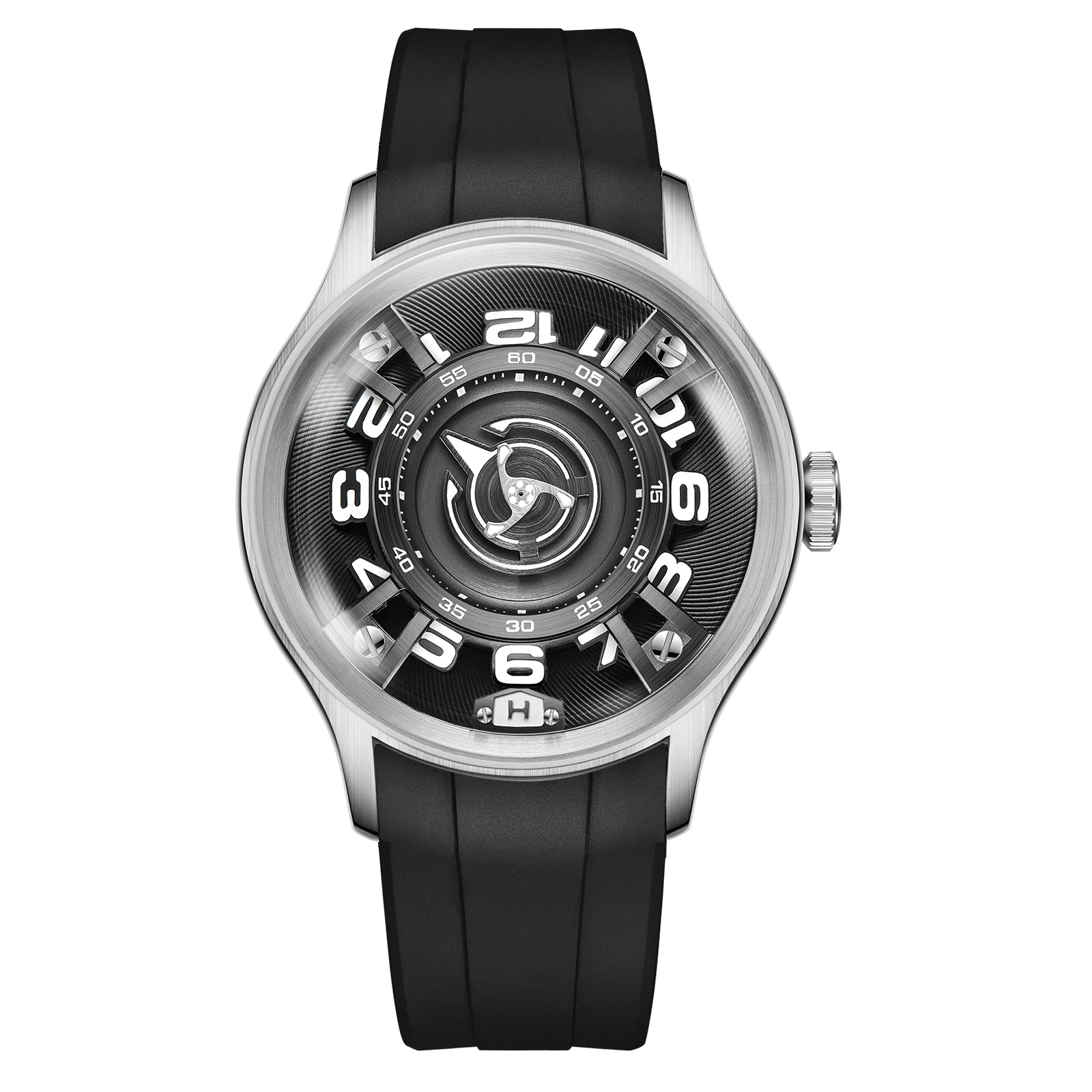
Modern Standards and Engineering Excellence (1990s-Present)
The establishment of the ISO 6425 standard in 1996 marked a pivotal moment in dive watch engineering, creating a unified set of requirements that separated true dive watches from merely water-resistant timepieces. To earn the “Diver’s” designation, watches must satisfy rigorous testing:
- Water resistance to at least 100 meters (330 feet)
- Visibility at 25cm in total darkness
- Thermal shock resistance (rapid temperature changes from 40°C to 5°C)
- Magnetic resistance
- Shock resistance
- Chemical resistance to saltwater exposure
- Precise functioning of the timing bezel
- Secure strap attachment that prevents accidental release
These standardized requirements encouraged manufacturers to push beyond minimum specifications, with many modern dive watches achieving depth ratings of 300, 600, or even 1,200 meters—far exceeding what human divers could survive.
Contemporary dive watch engineering has focused on maximizing durability through advanced materials:
- Ceramic bezels offering virtually scratch-proof surfaces with permanent coloration
- Advanced titanium alloys providing improved strength-to-weight ratios
- Carbon composites and ceramic cases with exceptional pressure resistance
- Sapphire crystals with multiple anti-reflective coatings for optimal visibility
Movement technology has seen similar advancements focused on reliability and precision. Modern automatic movements incorporate:
- Silicon components resistant to magnetic fields
- Extended power reserves (60+ hours versus the traditional 38-42)
- Improved shock absorption systems
- Superior lubricants with longer service life
These improvements significantly extend the service intervals and overall longevity of automatic watches, addressing historical concerns about mechanical reliability in professional environments.
Manufacturing precision has likewise improved dramatically through computer-aided design and CNC machining, enabling tolerances measured in microns rather than millimeters. This precision engineering ensures more consistent performance and improved water resistance through perfectly mated components.
The modern era has also witnessed incredible achievements in extreme depth engineering. In 2012, filmmaker James Cameron’s historic solo dive to the Mariana Trench was accompanied by a Rolex Deepsea Challenge watch rated to an astonishing 12,000 meters. In 2019, Victor Vescovo’s expedition to the same location carried an Omega Seamaster Planet Ocean Ultra Deep Professional rated to 15,000 meters—watches engineered to withstand pressures that would crush a submarine.
While such extreme-depth capabilities far exceed practical diving needs, they demonstrate the continuing pursuit of engineering excellence that defines the category. Today’s dive watches represent the culmination of nearly a century of continuous development—tools designed to such high standards that they can withstand conditions far beyond what their users will ever experience.
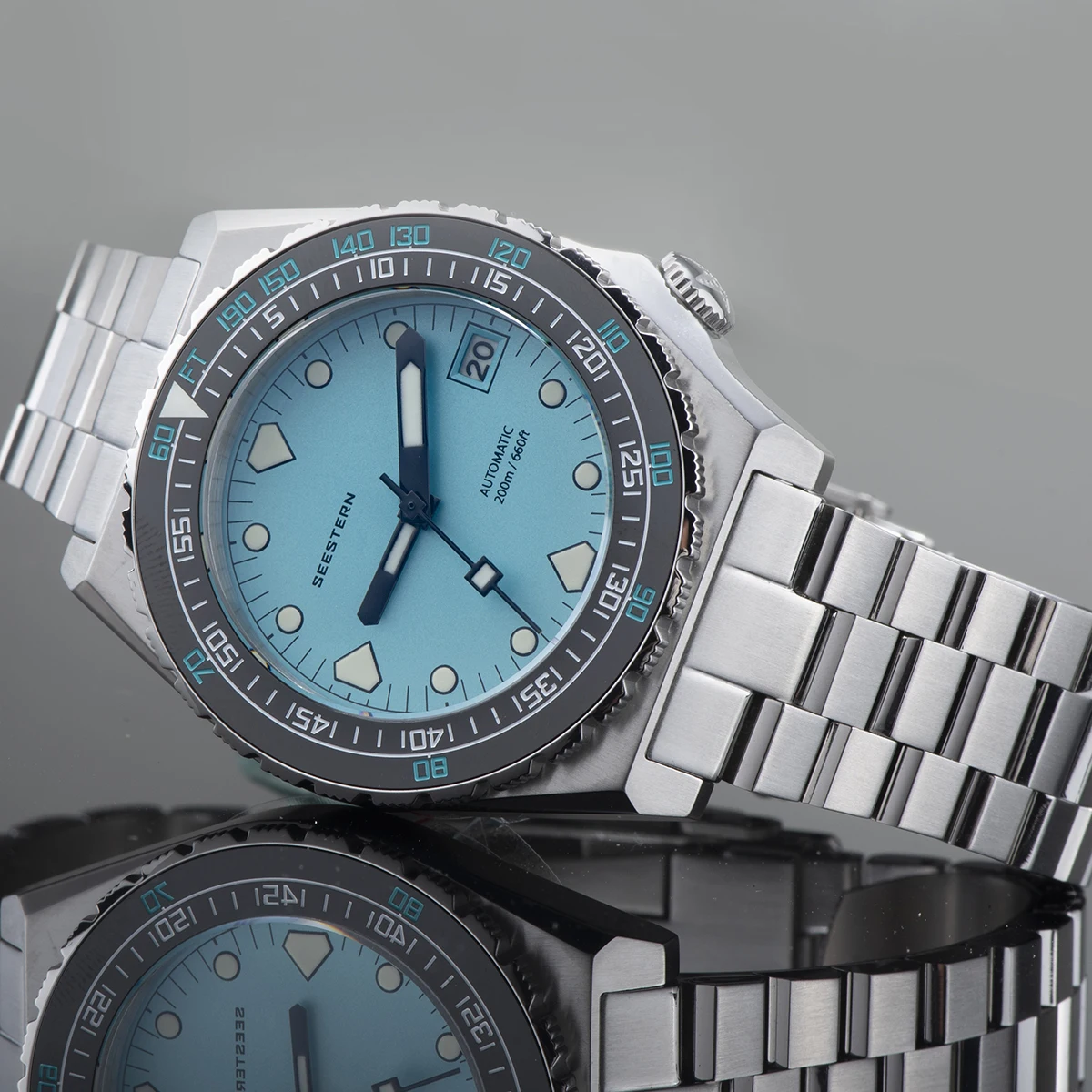
Military Inspired Automatic Watches, Rugged Automatic Watches, Tactical Automatic Watches
Price range: $852.14 through $994.60 Select options This product has multiple variants. The options may be chosen on the product pageAutomatic Chronograph Watches, Classic Style Dive Watches
$3,053.06 Select options This product has multiple variants. The options may be chosen on the product pageBronze Automatic Watches, Military Inspired Automatic Watches, Professional Spec Dive Watches
Price range: $1,442.21 through $1,442.82 Select options This product has multiple variants. The options may be chosen on the product pageProfessional Spec Dive Watches, Titanium Automatic Watches
$574.74 Select options This product has multiple variants. The options may be chosen on the product pageClassic Automatic Dress Watches, GMT Automatic Watches, GMT Dive Watches
Price range: $468.93 through $552.94 Select options This product has multiple variants. The options may be chosen on the product pageClassic Pilot Watches, Military Inspired Automatic Watches
$561.00 Select options This product has multiple variants. The options may be chosen on the product page
The Dive Watch as Engineering Icon: From Tool to Legend
The remarkable journey of the dive watch from specialized tool to luxury status symbol represents a unique phenomenon in consumer products. Few purpose-built instruments have achieved such cultural cachet while maintaining their fundamental engineering integrity. Unlike many products that sacrifice functionality for style when entering the luxury market, dive watches have largely preserved their technical DNA even as their prices and prestige have increased.
This transformation began in the 1980s and accelerated through the 1990s as mechanical watches rebounded from the quartz crisis. Dive watches proved particularly well-suited for this evolution because their defining characteristics—robustness, legibility, distinctive aesthetics—translated perfectly into the luxury realm. The very engineering features that made them effective underwater tools also made them visually distinctive and practically indestructible for everyday wear.
What explains the enduring appeal of traditional dive watch engineering in our digital age? Several factors contribute:
- Mechanical self-sufficiency: A well-made automatic dive watch will function indefinitely without batteries, charging, or software updates
- Tangible craftsmanship: The mechanical movement represents hundreds of hours of skilled labor and centuries of horological tradition
- Proven reliability: The fundamental engineering has been tested over decades in the most demanding environments
- Design continuity: The aesthetic language established in the 1950s maintains a timeless appeal
The last two decades have seen an explosion of microbrands bringing fresh perspectives to dive watch design while honoring traditional engineering principles. These smaller companies have been particularly innovative in exploring materials previously uncommon in dive watches, with bronze automatic watches representing one of the most popular trends. Bronze’s unique patina development creates a watch that evolves with its owner—telling a personal story through gradual oxidation.
Similarly, the integration of additional complications into the dive watch format has expanded functionality without compromising core performance. GMT dive watches that track multiple time zones have become particularly popular among travelers who appreciate both the robust construction and the practical utility of tracking home time while abroad.
Despite their evolution into luxury items, dive watches continue to see meaningful engineering refinements. Improved manufacturing precision, better materials, and enhanced movement technology ensure that today’s dive watches are objectively superior to their vintage counterparts in terms of performance—even as they maintain visual continuity with those iconic designs.
As sustainability becomes increasingly important, the dive watch industry has begun exploring eco-friendly manufacturing techniques, recycled materials, and more transparent supply chains. This focus on environmental responsibility seems particularly appropriate for timepieces so closely associated with ocean exploration and the marine environment.
The dive watch stands as a rare example of form and function achieving perfect harmony—where the engineering requirements of the task created an aesthetic so compelling that it transcended its original purpose to become an enduring design icon.
Engineering Innovations That Transcended the Depths
The engineering solutions pioneered for dive watches have had a profound impact far beyond their niche underwater application. Many features we now take for granted in everyday timepieces originated as specific solutions to diving challenges:
The screw-down crown—now standard in virtually all sports watches—was developed specifically to prevent water ingress during diving. This simple yet effective engineering solution created a threaded tube in the case that allowed the crown to be screwed down tightly against gaskets, creating a water-tight seal. Today, this technology protects watches from water damage during everyday activities like handwashing or swimming.
Enhanced water resistance standards have similarly migrated across the entire watch industry. Before dive watches established standardized testing protocols, water resistance claims were often unreliable and inconsistent. The rigorous standards developed for dive watches eventually influenced industry-wide practices, benefiting consumers through more reliable water resistance in all types of watches.
Luminous technology initially developed for underwater visibility now enhances the practicality of all watches in low-light conditions. The timeline of dive watch innovations shows a continuous progression of luminous materials, from radioactive radium to safer tritium to modern photoluminescent compounds. These safer, brighter materials now appear in everything from dress watches to digital displays.
Case hardening techniques originally developed to protect dive watches from banging against diving equipment and coral reefs now improve the durability of everyday timepieces. Innovations in bezel construction—particularly the use of ceramic and sapphire inserts—have found applications across various watch styles, offering superior scratch resistance for any watch likely to encounter daily wear.
Perhaps most significantly, the emphasis on legibility under adverse conditions has influenced overall watch design philosophy. The high-contrast dials, distinctive hand shapes, and clear indices that make dive watches readable at depth also make them exceptionally functional in everyday situations. This practical approach to design—where form follows function—has become a guiding principle for many watchmakers.
Crown protection systems originally engineered to prevent accidental manipulation underwater now provide security against everyday bumps and impacts. The iconic crown guards seen on many dive watches have been adopted across numerous watch categories as both a functional feature and a design element.
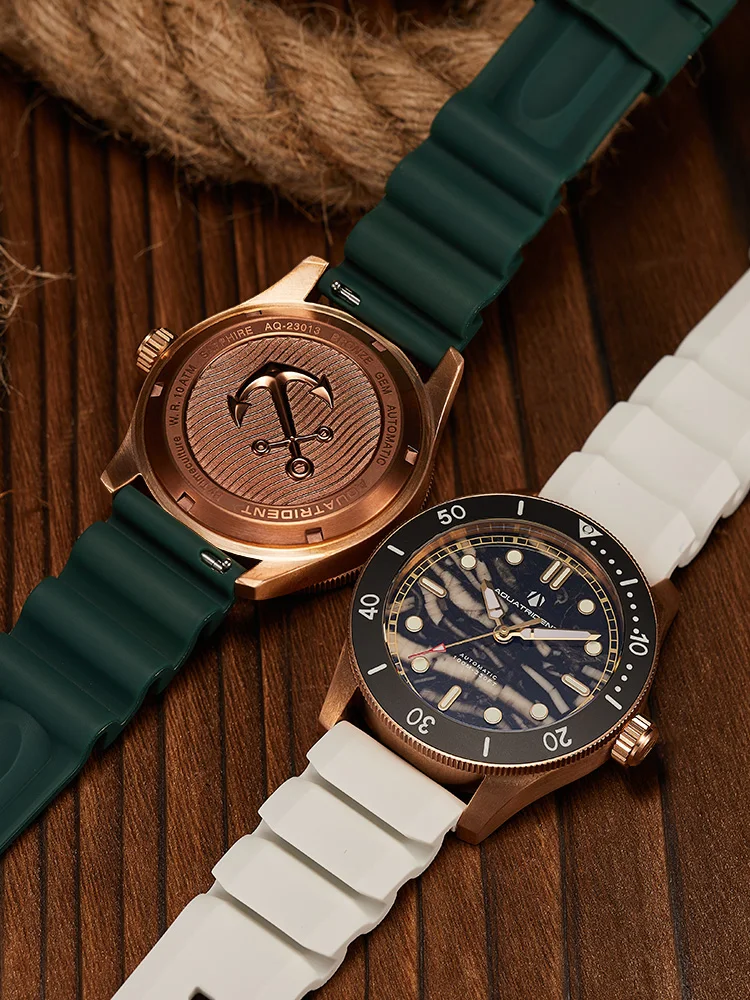
The rigorous pressure testing methodologies developed for dive watches have raised quality control standards across the watch industry. Techniques for evaluating water resistance, shock resistance, and durability pioneered for dive watches now benefit all timepieces, ensuring greater reliability regardless of intended use.
These engineering crossovers demonstrate how specialized tools often generate innovations with broader applications. The dive watch’s journey from specialized equipment to universal influence embodies how purpose-driven engineering can create solutions with lasting impact across an entire industry.
Is the Mechanical Dive Watch Obsolete? Engineering Versus Practicality
Given the capabilities of modern dive computers and digital instruments, are traditional mechanical dive watches still relevant as actual diving tools?
From a purely practical perspective, a mechanical dive watch cannot match the comprehensive functionality of a dedicated dive computer. Modern dive computers calculate decompression schedules, track gas consumption, monitor ascent rates, and store dive profiles—functions impossible for any mechanical watch regardless of engineering excellence.
However, professional diving organizations still recommend mechanical watches as backup timing devices. This recommendation stems from a fundamental principle in diving safety: redundancy. Electronic devices can fail due to battery depletion, software glitches, or water ingress, making a simple, self-powered mechanical backup prudent for critical time tracking.
The reliability equation changes when comparing failure modes:
- Mechanical watch failure typically happens gradually with warning signs (losing time, stopping periodically)
- Electronic failure often occurs suddenly and completely (screen goes blank, device shuts down)
This difference makes mechanical watches valuable as secondary instruments even in an electronic age. Their ability to function without batteries or charging provides peace of mind during extended expeditions where power sources may be limited.
Professional divers often articulate a practical philosophy: digital devices for primary data management, mechanical watches for redundancy and tradition. This approach leverages the strengths of both technologies while acknowledging their respective limitations.
Rather than becoming obsolete, mechanical dive watches have evolved into specialized tools with a more focused purpose within a broader diving instrument ecosystem. They represent the foundation upon which modern diving technology was built—reliable, self-sufficient instruments that continue to serve as the ultimate backup when digital technology reaches its limits.
The Future of Dive Watch Engineering
As we look toward the future of dive watch engineering, several promising directions emerge that balance innovation with the heritage that makes these timepieces special.
Material science continues to advance at a rapid pace, offering watchmakers new possibilities that maintain traditional aesthetics while improving performance. Research into ultra-hard ceramic composites, carbon nanotube reinforcement, and advanced metallurgy promises watches that resist scratches, magnetic fields, and corrosion better than ever before. These materials could enable thinner cases with equivalent pressure resistance, creating more comfortable dive watches without sacrificing performance.
Sustainability has become an increasing focus, with manufacturers exploring recycled ocean plastic, responsibly sourced metals, and more environmentally friendly manufacturing processes. Several brands now offer straps made from reclaimed fishing nets or recycled PET bottles—a fitting connection for timepieces associated with ocean exploration. This trend toward environmental consciousness reflects the dive watch community’s natural affinity for marine conservation.
The integration of selective electronic features with traditional mechanical movements represents a compelling middle ground between purist mechanical engineering and digital functionality. Some manufacturers are exploring GMT functionality in dive watches alongside hybrid systems that maintain mechanical timekeeping while incorporating basic sensors for depth or temperature. These approaches preserve the soul of mechanical watchmaking while acknowledging practical modern needs.
The extreme environments of space exploration present interesting crossover potential for dive watch engineering. The principles that make watches function reliably underwater—sealed systems, resistance to pressure changes, legibility in low light—apply equally to extra-terrestrial environments. Several dive watch designs have already been adapted for spaceflight, suggesting that the engineering challenges of these seemingly different environments share surprising similarities.
Traditional watchmakers are increasingly embracing transparency in their engineering processes, educating consumers about the technical solutions that justify premium pricing. This focus on technical education helps maintain appreciation for mechanical engineering excellence in an age when time is available on every electronic device.
What remains certain is that the fundamental engineering principles established during the golden age of dive watch development will continue influencing future designs. The unidirectional bezel, the screw-down crown, the highly legible dial—these elements have proven so functionally perfect that they transcend trends. Future innovations will likely build upon rather than replace these foundations, adding capabilities while honoring the engineering heritage that makes dive watches special.
Conclusion: Engineering Marvels That Conquered the Deep
The story of dive watch engineering represents one of horology’s most compelling narratives—a journey from necessity to artistry, from pure function to cultural icon. What began as a focused effort to create reliable underwater timing instruments evolved into a showcase for mechanical ingenuity that continues to captivate enthusiasts decades after digital alternatives emerged.
From the early waterproof innovations of the 1920s and 30s to today’s extreme-depth record holders, each advancement built upon previous solutions while addressing new challenges. The rotating bezel, improved case sealing, helium escape valves, and material innovations all served specific practical purposes while collectively defining an entire category of timepieces.
Perhaps most remarkably, the core engineering solutions established nearly seventy years ago have proven so fundamentally sound that they remain largely unchanged. The dive watch represents that rare perfect marriage of form and function—where the requirements of the task created an aesthetic so distinctive and compelling that it transcended its utilitarian origins.
In an era dominated by disposable technology, the mechanical dive watch stands as a testament to enduring engineering principles and the timeless appeal of purpose-built tools. These watches embody the human drive to explore, to overcome environmental challenges, and to create objects of both utility and beauty. More than just instruments for measuring time underwater, they have become physical connections to a rich heritage of exploration and achievement—engineering marvels that conquered the deep and captured our imagination.


